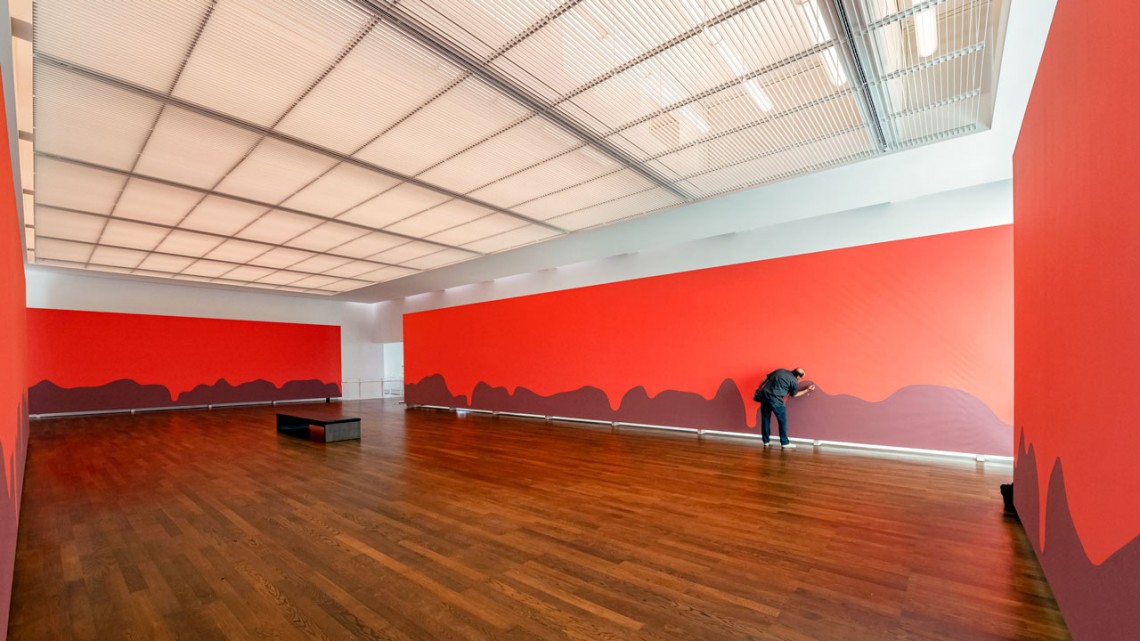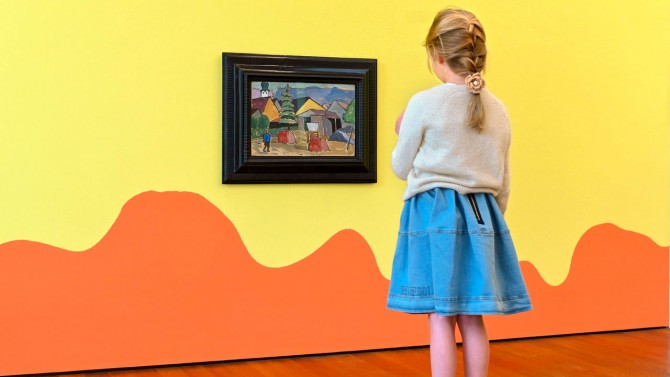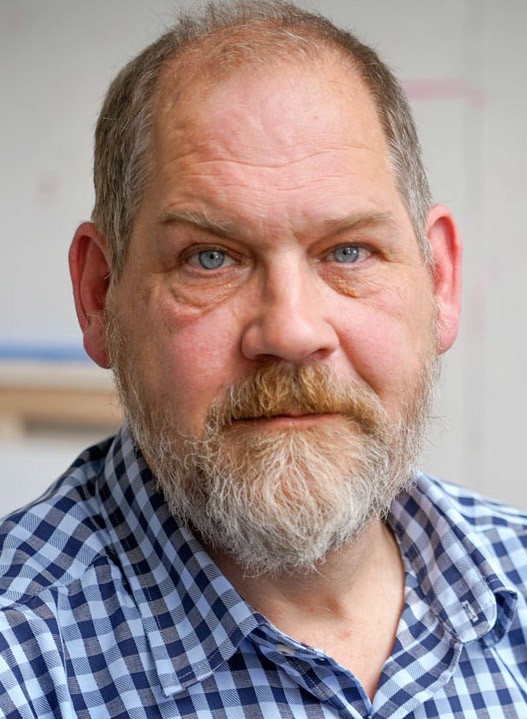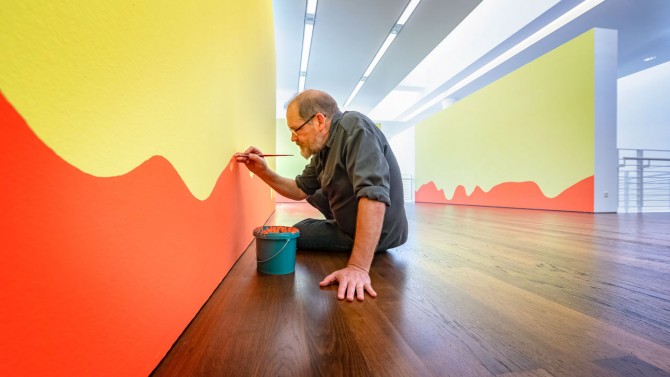
Carl Ostendarp paints a gallery wall for “The Burda Brothers” exhibition at Museum Frieder Burda in Baden-Baden, Germany.
Ostendarp creates colorful backdrops for German exhibit
By Daniel Aloi
Artist Carl Ostendarp, professor of art in the College of Architecture, Art and Planning, traveled to Europe in March to prepare a multifloor installation for a major museum exhibition of expressionist paintings and modern art.
“The Burda Brothers: A History of Collecting” opens May 12 at the Museum Frieder Burda in Baden-Baden, Germany. Delayed several weeks by the coronavirus pandemic, the exhibition will be on display through Oct. 4.
The museum is featuring art from the personal collections of museum founder Frieder Burda and his brothers, Franz and Hubert, the sons of publishers and media entrepreneurs who instilled in them a lifelong love of art and collecting.
The Burda brothers were exposed at an early age to German expressionist masters in their parents’ collection, which also reflected Aenne and Franz Burda’s appreciation of the power of colors. As their tastes developed, the young men began collecting the art of their time, and their fascination with color remained a constant.
Ostendarp’s work in Baden-Baden is a collaboration with curator Udo Kittelman, director of the National Gallery and the German state museums in Berlin.
A highlight of the exhibition is three differently colored iterations of “The Three Gentlemen,” a painting of the Burda brothers by pop artist Andy Warhol. One room in the museum will be devoted to artwork hung at the eye level of younger viewers, as Warhol himself once did in an exhibition to make his work accessible to children.
Ostendarp once worked at Warhol’s studio, and he is providing further eye candy for viewers with wall paintings for the German exhibition using a color-coding system. Playful lines divide his two-color walls, simulating dripping paint (which the museum describes as “a delicious coat of icing”) to accompany the works on display. His wall paintings for each floor of the museum will have different color schemes as settings for artwork including expressionist paintings by Max Beckmann, Ernst Ludwig Kirchner and Gabriele Münter.
“When I was an undergraduate in Boston, people were looking really closely at this work … it had this kind of post-punk vibe to it,” Ostendarp said in his Tjaden Hall office and studio in February, as he was preparing templates and color samples for the exhibition. “But I hadn’t looked that closely at it since, and once they invited me to do this project, I spent some time doing research. I started reading about Kirchner and color, and how much he’d negotiated what was happening with French fauvist painting and color in divisionist painting, and with color theory based on Goethe’s observations, which are basically the first example of phenomenology, ever.”
Ostendarp also cited concurrent developments in art in Germany, in commercial color prints, advertising “and paint technologies – they were making all these new colors,” he said. “And I started thinking of the expressionist work as much more thoughtful and calculated, relative to color. The subjectivity of that style – ‘I’m going to make something that shows how I feel about what I’m depicting’ – is sort of its innovation, which seemed to really lean heavily on color.”
This theoretical approach to color “ended up being the inspiration for how I was going to organize the range of colors and the murals,” he said, “and try to turn the whole museum into this 3D version of a Goethe color diagram, so that you start in blue-violet, blue, blue-green, go to greens and then to yellows, then to oranges, reds and red-violet as you climb up through the galleries.”
This will be Ostendarp’s fourth major project involving wall paintings for a museum installation.
He created similar installations for “All Tomorrow’s Parties” in 2007 at the Museum für Moderne Kunst in Frankfurt (also at the invitation of then-museum director Kittelman); “Pulled Up” in 2008 at the Rhode Island School of Design Museum in Providence; and “Fat Cakes/Myopic Void” in 2012 at Cornell’s Herbert F. Johnson Museum of Art. He has had many solo and museum exhibitions of his work and is a founding member of the Elizabeth Dee Gallery.
This is also his third project with Kittelman. It was Ostendarp who suggested a Velvet Underground and Nico song to title the 2007 show in Frankfurt.
“I’d been reading a book about the Velvet Underground in the hotel,” he said. “I guess I had this sense that people would look at these paintings … and retreat into a kind of connoisseurship mode, and not directly experience their intention, the sex and violence aspects.
“So I said that to Udo, and then he went upstairs and I kept painting. He came back down and said he’d been on the phone with Lou Reed [who wrote the song], and Lou thought it would be fine and wouldn’t charge any money if we played that first album that Warhol produced in the gallery space. And I noticed that it kept the viewers in the present tense – there’s something about music that’s like it’s happening right now.”
Media Contact
Get Cornell news delivered right to your inbox.
Subscribe



